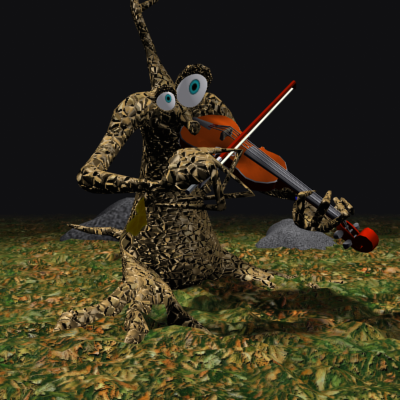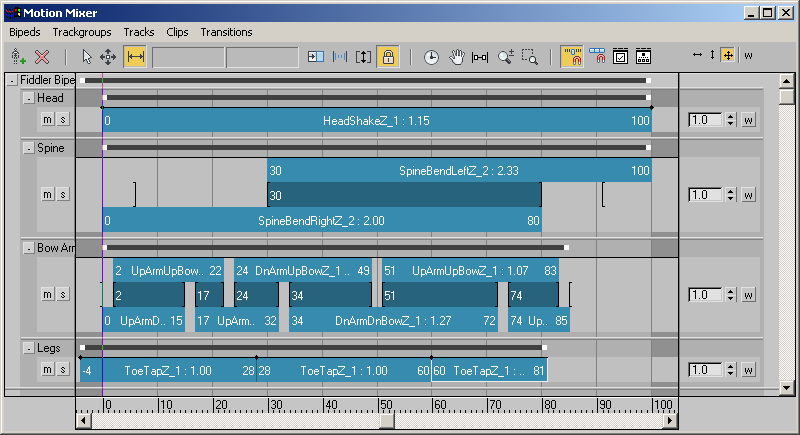The Motion Mixer allows you to combine motion data for biped and non-biped objects.

The Motion Mixer takes its design from the world of audio. When a song is recorded in a studio, each instrument is played and recorded separately. Each recording is called a track. The tracks are then put together in a sound mixer so they play simultaneously, or overlap one another. During the mixing process, the mixer operator can change the length or speed of a track, increase or reduce volume, move a track to another place in the song, or cause a track to fade in or out.
The Motion Mixer works in a similar way. For any object, you can add multiple tracks to the mixer, each holding a separate series of motion clips (BIP files or XAF files). You can trim clips to use only part of a motion, make the clips play slower or faster, or create transitions from one clip or set of clips to another.

You can also use the Motion Mixer to animate some body parts with one set of clips, and other body parts with other motions. For example, suppose you have two clips, one where the biped runs with its arms pumping by its sides, and another where the biped stands and cheers with its arms in the air. You can mix the leg and hip motions from the running motion with the arms from the cheering motion to make an animation of a biped cheering as he runs across a finish line.
The Motion Mixer allows you to mix motion files (BIP files and XAF files) for any biped or non-biped objects. These motion files are also called clips.
The Motion Mixer is used to mix motion clips that are assigned to bipeds and non-biped objects. The concept of the Motion Mixer is based on audio mixing done in the music and sound industries. Like an audio mixer, Motion Mixer lets you add a series of tracks for each object in a scene. To each track you add clips in the form of BIP or XAF files. You can also add transitions to smoothly link clips together. Clips and transitions can be filtered so their motion affects only specified biped parts.